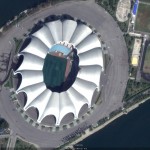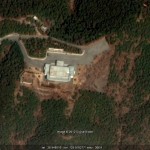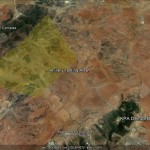Since its foundation in the late 1940s, the North Korean state has followed a zero tolerance approach in its dealings with dissent. The authorities strive to discover and punish/correct even minor deviations from the prescribed way of thinking.
But the political police only get involved in rare and extreme cases. In most cases, the real and alleged offenders are disciplined by their own peers and immediate supervisors within their “organization”.
Indeed, so-called “organizational life” has been a peculiar and omnipresent feature of North Korean life since the 1960s, even though it has declined in the past two decades.
Every single North Korean must belong to a cell of one (and only one!) organization, and this cell, usually consisting of one or two dozen people, has multiple opportunities to control and correct his/her behavior. There are five such organizations in the North, with each having easily definable and mutually exclusive membership – the Korean Workers’ Party (KWP), the Youth Union, the Trade Union, the Farmers Union and the Women’s Union.
Once a North Korean turns 14, he or she is expected and, indeed, required to join the Kim Il-sung Youth Union and stay there until the age of 30 (unless he or she is lucky enough to be admitted into the KWP at young age).
After 30, the lucky and socially ambitious can still theoretically join the party (not an easy undertaking), while the rest become members of the Trade Union or Farmers Union, depending on whether they work in the fields or on a production line. Even housewives, without a job, are not left out, since they are required to be members of the Women’s Union.
The rules are simple and unambiguous. An industrial worker in his late 20s will attend meetings and other activities of the Youth Union in his work place. Once he turns 30, he is required to switch membership to the Trade Union. He might marry a woman from the same factory, but if she decides to become a housewife (a very common occurrence), she would switch membership to the Women’s Union.
Typically, every organization holds three meetings every week, each one lasting between one and two hours. Two of the three weekly meetings are indoctrination sessions. Their participants are lectured about the greatness of the Kim family, the glories of the socialist economy and the depraved nature of the pro-American South Korean puppet regime, as well as about other similarly lofty, ideologically useful topics.
The content of the lectures is supposed to be memorized and tests are occasionally held, but examiners are not excessively strict.
This system makes sure that propaganda messages are delivered to every Korean. It is possible that people do not read newspapers (because North Korean newspapers are seriously boring) or do not listen to official radio, so the major ideas of propaganda are delivered straight to their workplace.
But it is another weekly function that seems to constitute the true core of North Korea’s organizational life – the so-called “self- and mutual criticism sessions”. In most cases, such sessions are usually held on a weekly basis.
During a criticism session, every member of an organization – in other words, every adult North Korean – is supposed to deliver something akin to public penitence and confession. He or she must admit some improper acts that he or she committed in the previous week.
Serious deviations are seldom admitted and discussed; people usually limit themselves to relatively trivial matters like, say, being a few minutes late for a job or not taking proper care when cleaning the shop floor.
Every act of public confession should be accompanied by a proper quote from Kim Il-sung (leader from 1948 to 1994) or his son Kim Jong-ll (leader from 1994 until his death in 2011).
Then a repentant sinner must be criticized by another member of the same organization. Usually both confession and criticism are kept short, taking hardly more than a minute or two per person.
In most cases, these sessions are essentially performances where people admit the sins they know to be relatively minor and hence harmless.
It is also known that future participants of the Saturday performance (“self- and mutual criticism sessions” tend to be scheduled for Saturdays) sometimes make preliminary deals and agree on who should criticize whom and for what.
Nonetheless, there is always the small but real risk of a public denunciation, a situation getting out of control, and therefore the sessions do exercise significant pressure over organization members.
If something more improper has taken place, a more specialized session can be conducted within the organization (often called “the ideological struggle session”).
When this is to be done, the offender is subjected to one or two hours of a verbal harangue, often of a quite offensive and rude nature. Usually, this is the way in which an organization deals with offenses that are too trivial to be dealt with by the police, but are nonetheless seen as relatively serious – like, say, frequent absence from work without sufficient reason, or traveling to another part of the country without obtaining a proper permit (and being caught there).
Through organizational life, the state ensures that every single North Korean is exposed to the official ideology and also gets regular training in the politically correct ways of conduct.
The slow but unstoppable disintegration of Kim Il-sung’s “national Stalinism” in the past two decades seriously undermined the foundations of organizational life. Nowadays, a majority of North Koreans make a living outside the official state economy and they have now become much less dependent on their workplaces and supervisors.
Increasingly, they see organizational life as a troublesome and time-consuming formality. They can nowadays negotiate a deal with their supervisors, getting permission to be absent from the workplace, if they pay a contribution to the factory’s budget – this is known as an “August 3 contribution” (after the date of a government decree that allowed such practice).
Tellingly, this contribution frees the payer not only from attending his/her workplace but also from time-consuming indoctrination and mutual criticism sessions – after all, the average adult North Korean is supposed to spend three to five hours a week attending these functions.
When the functions are conducted, they are much easier than was the case in the 1970s and 1980s. The meetings are shorter nowadays, and absenteeism – once almost unthinkable – came to be ignored if it remained relatively infrequent (or if the “August 3 contribution” had been paid).
This relaxation seems to be especially pronounced in the Women’s Union, since most North Korean housewives are much involved with the black market economy and hence, if compared to workers of state factories, have less time for the boring activities of their local Women’s Union cells.
Like many institutions of the “old North Korea”, organizational life is seemingly on the decline. But this decline is by no means complete, and a majority of North Koreans are still taken care of by their organizational supervisors. And these people make sure that even minor deviations from what is considered to be correct are likely to be discovered and censured.



